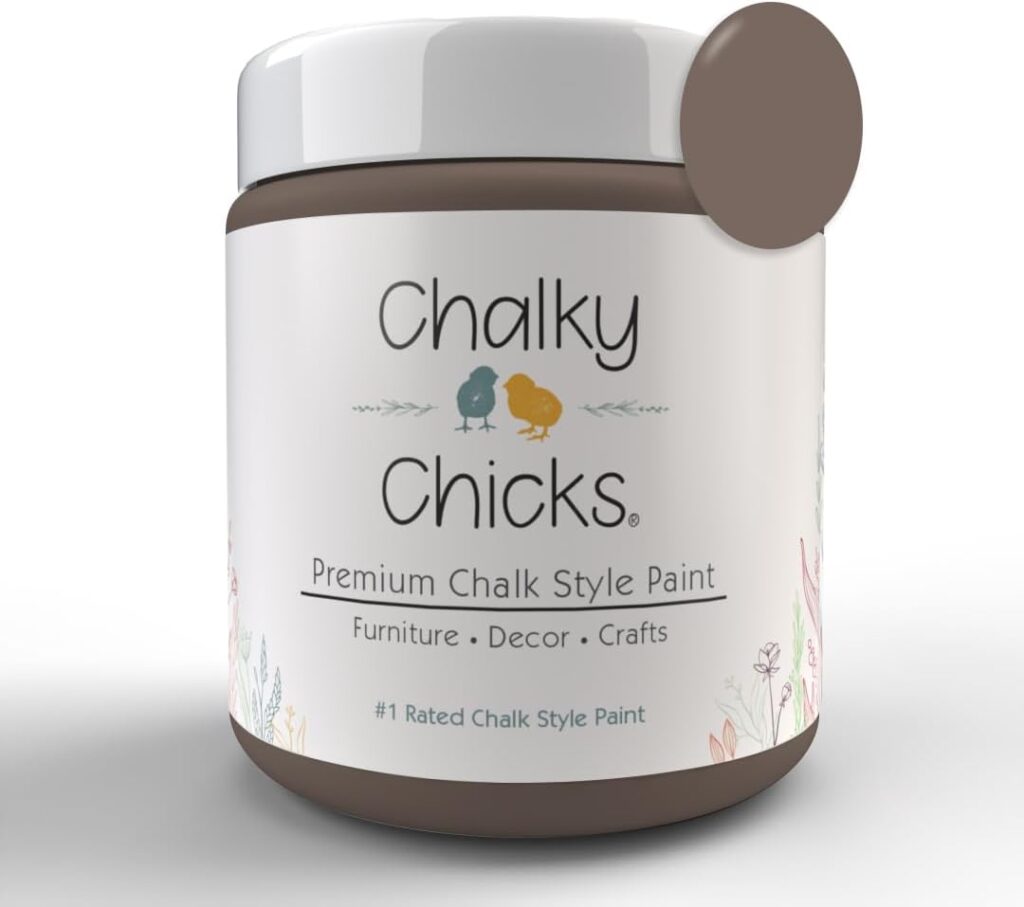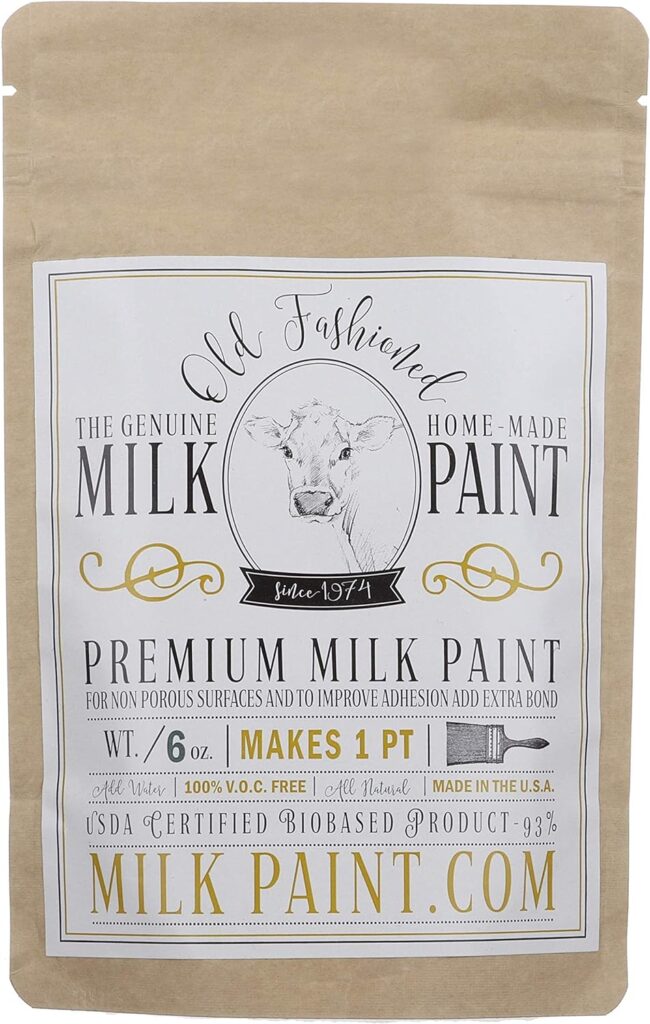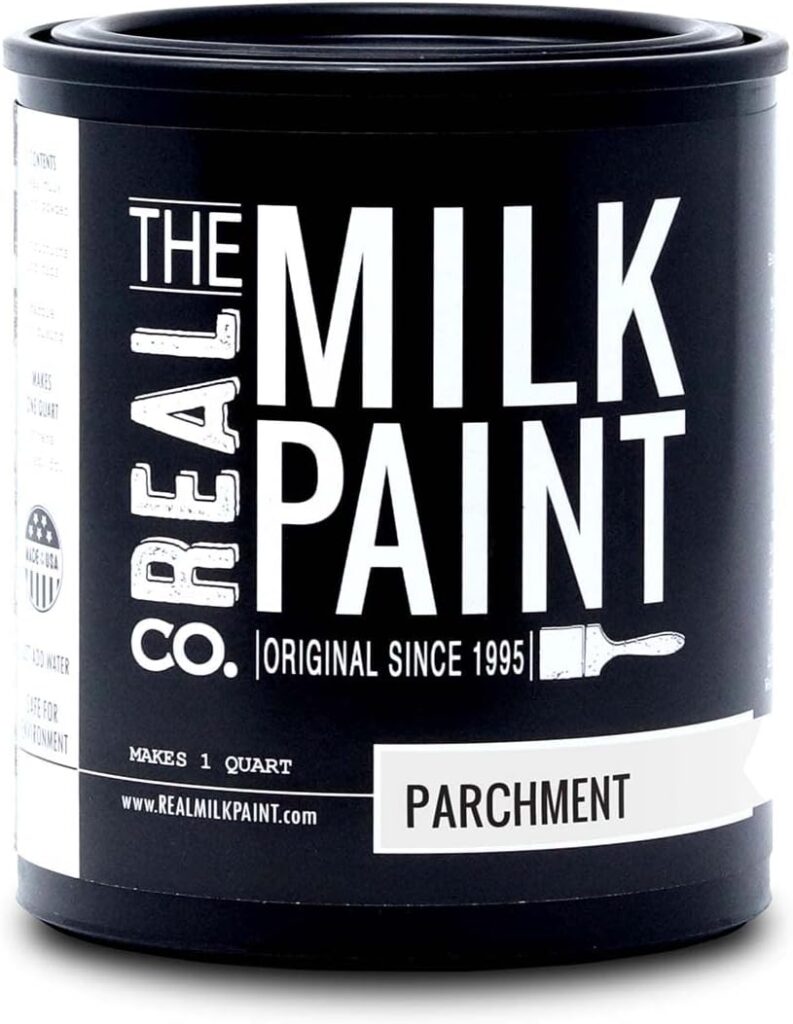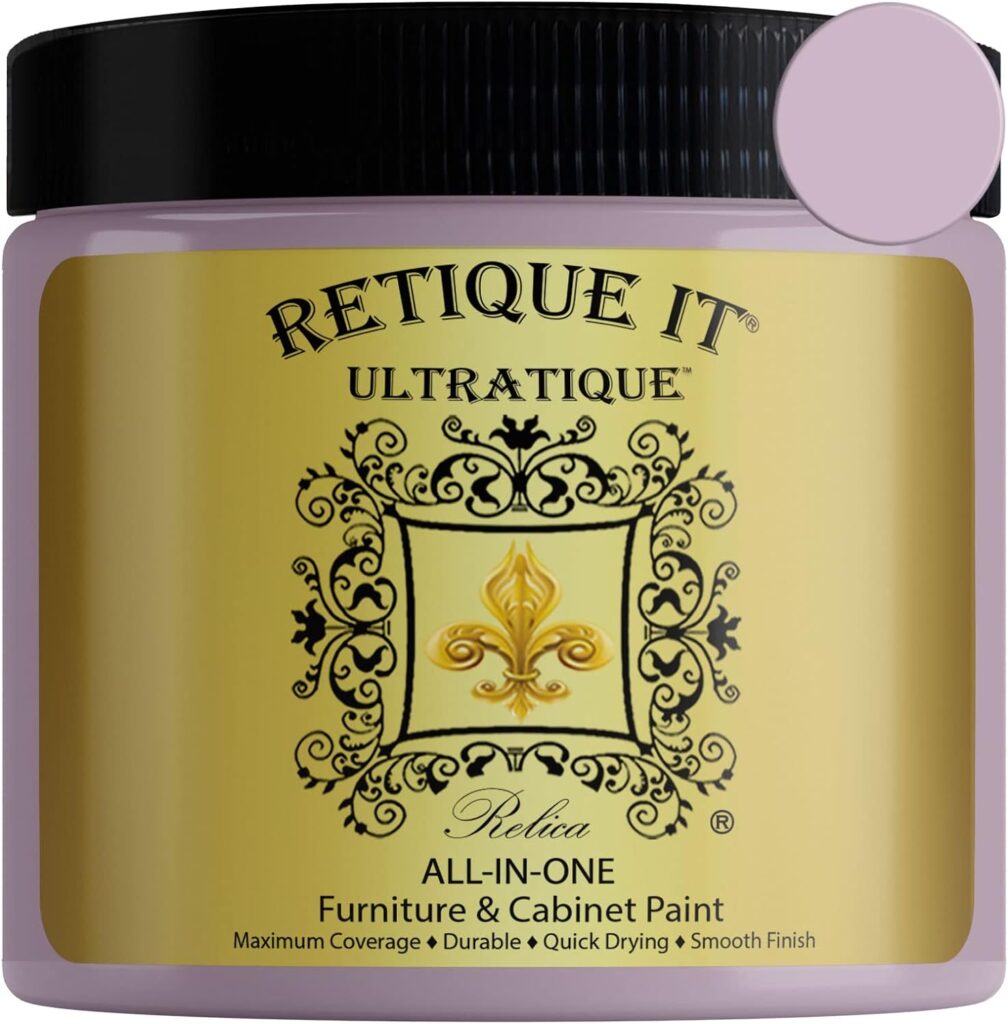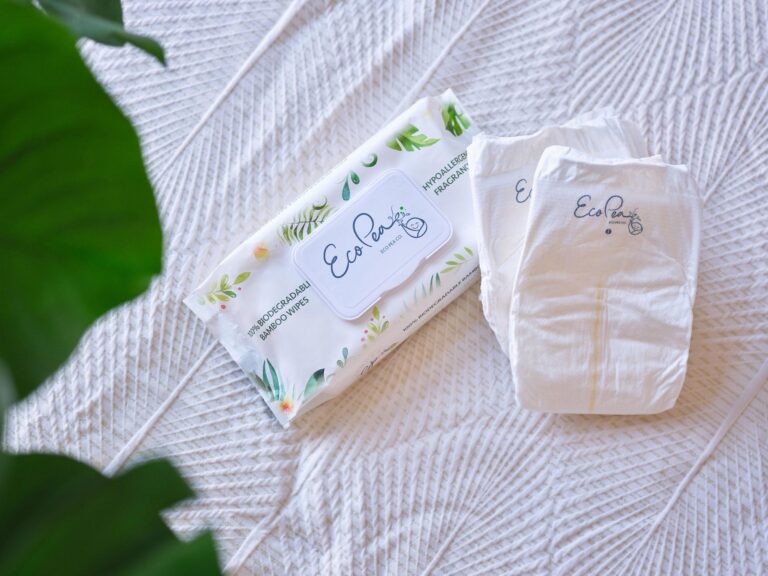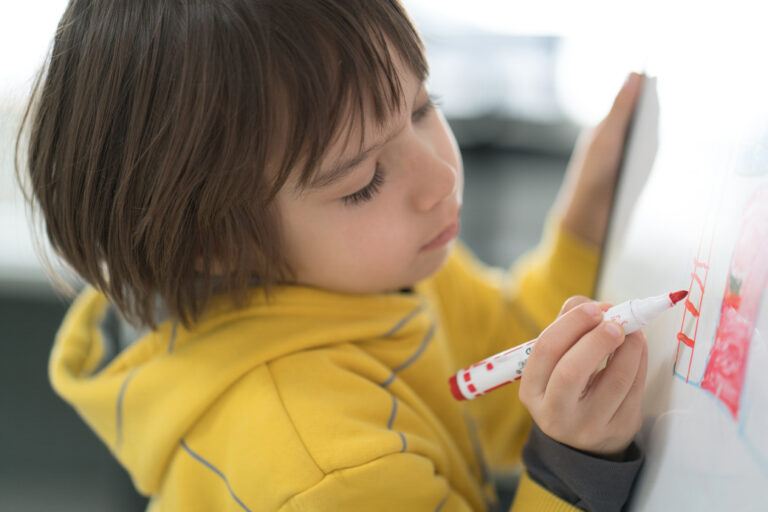Soft pastels and neutrals? Out. Bold, playful primary colors? Very in. If you’re updating your nursery to reflect this colorful trend, it’s time to think beyond just the walls—your baby’s crib deserves a makeover too! But before you grab a brush and dive into a red, blue, or yellow wonderland, there’s one thing you need to prioritize: safety.
This guide is all about choosing the best non-toxic paint for your crib while embracing the bold and cheerful Primary Play trend. Whether you’re dreaming of a funky, mural-inspired nursery or simply giving your baby’s crib a fresh pop of color, we’ve got you covered. Let’s paint a space that’s as safe as it is stylish, ensuring your little one’s room is both healthy and full of vibrant energy for their first adventures.
What Makes Paint Non-Toxic?
Non-toxic paint stands out because it skips the harmful chemicals found in traditional paints. Things like VOCs (volatile organic compounds), heavy metals, and formaldehyde can release unhealthy fumes into your home, which is the last thing you want in your nursery.
Non-toxic options are carefully formulated to avoid these ingredients, making them safer for your baby and the environment. Let’s consider what makes these paints safer and why they’re worth considering for your space.
Types of Non-Toxic Paints for Cribs (and Playful Primary Spaces!)
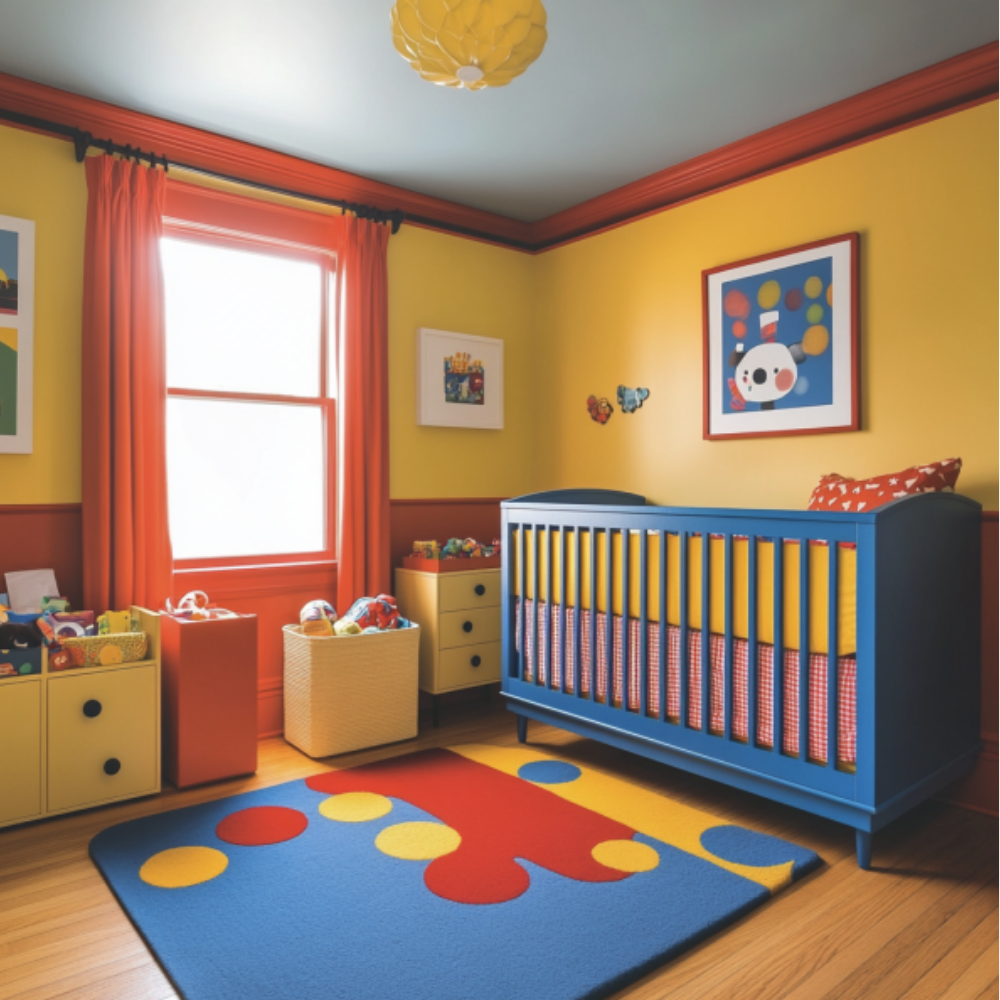
When it comes to painting your baby’s crib, the options for non-toxic paints are as varied as a box of crayons—and just as colorful! Whether you’re drawn to water-based paints for their easy cleanup and low odor, natural paints crafted from organic ingredients, or zero- and low-VOC options that keep nasty chemicals out of the air, there’s something to fit every need (and nursery aesthetic).
But how do you pick the perfect one? This section will guide you through the safest, healthiest choices for cribs and nursery furniture, breaking down buzzwords like VOCs and harmful chemicals. With the right paint, you can create a nursery that’s not only vibrant and stylish but also a safe, welcoming haven for your little one.
Spray Paints: While some spray paints may contain harsh chemicals and high VOC levels, eco-friendly options are available. Look for spray paints labeled low-VOC or zero-VOC paint to minimize exposure to harmful fumes. These paints offer convenience and ease of application, ideal for intricate crib designs and detailing.
Milk Protein-Based Paints: Milk protein-based paints, like casein paint, are derived from milk proteins and are indeed part of the paints category mentioned in the paragraph you provided. These paints are known for their non-toxic nature and eco-friendly properties. They are often low in VOCs and offer a smooth, durable finish, making them an excellent option for cribs and nursery furniture where safety and environmental impact are priorities.
Low-VOC Paint: Similar to zero-VOC paints, low-VOC options contain minimal levels of volatile organic compounds, reducing the emission of harmful chemicals into the air. Low-VOC spray paints and traditional brush-on paints are available in various colors and finishes, providing versatility and peace of mind for nursery projects.
Water-Based Paint: Water-based, non-toxic paints are famous for their safety and convenience in cribs and nursery furniture. Low VOC levels minimize harmful emissions and odors while drying quickly and allowing for easy cleanup with water. These paints offer durable finishes in various colors and are customizable to match your nursery decor.
Acrylic Paints: Acrylic paint is a versatile and popular option for cribs and nursery furniture, offering vibrant colors and a durable finish. These paints are water-based and typically low in VOCs, making them safer for your baby’s environment. With quick drying times and easy cleanup, acrylic paints are convenient for DIY projects and intricate designs on crib surfaces. When selecting acrylic paints, opt for those labeled as non-toxic and low in VOCs to ensure a healthy and safe nursery space.
Oil-Based Paints: While durable and providing a smooth finish, oil-based paints often contain high levels of volatile organic compounds (VOCs). Their strong odor and longer drying times make them less ideal for baby’s rooms. Cleanup requires harsh solvents, posing potential risks.
Why Choose Non-Toxic Paint for Your Baby’s Crib?
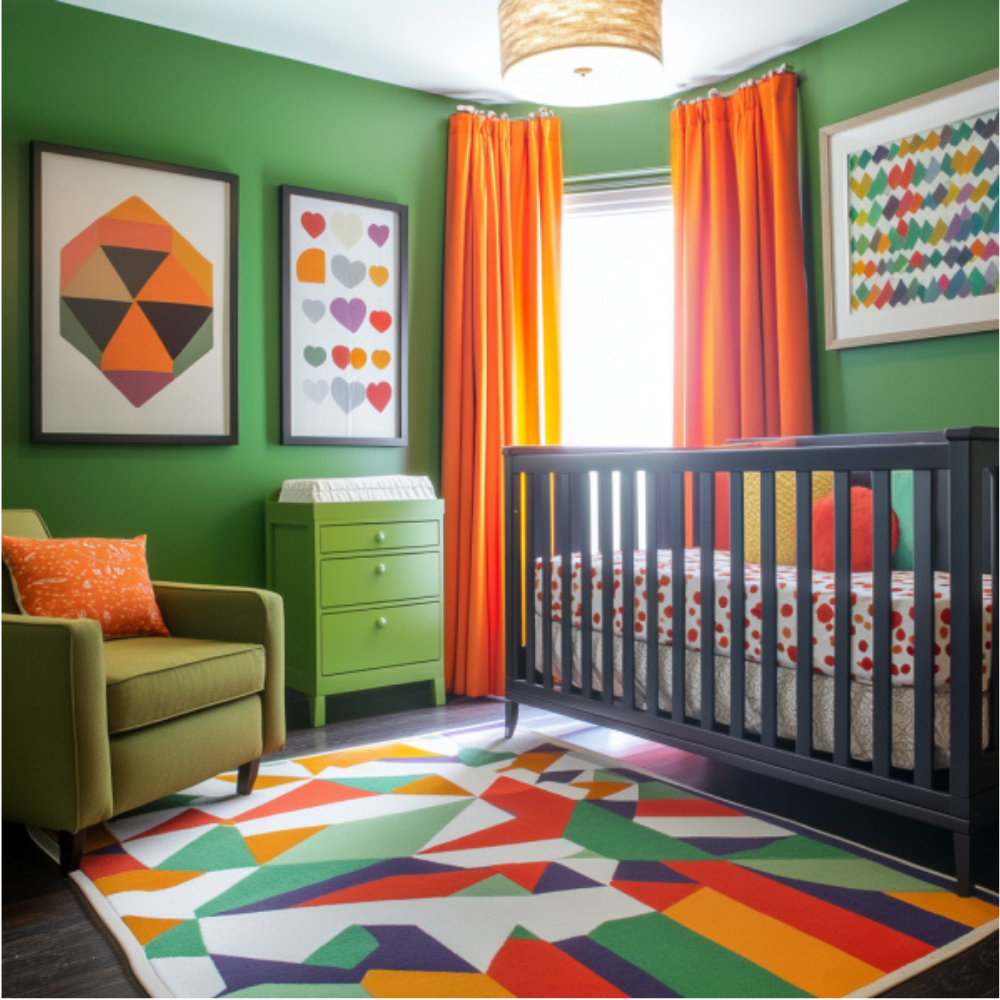
Choosing non-toxic paint for your baby’s crib and nursery furniture is a win-win. Not only are you protecting your little one from harmful chemicals, but you’re also doing your part to create a healthier environment for the future. It’s a simple way to make sure your nursery is safe, vibrant, and eco-friendly. Here are a few of the benefits:
Health Benefits
Non-toxic paints are specifically formulated to be free from harmful chemicals, such as volatile organic compounds (VOCs) and other toxins, making them the safest paint choice for young children. By choosing these baby-safe paints, you’re minimizing the risk of respiratory issues, allergic reactions, and skin irritations that may arise from exposure to conventional paints. Your baby’s delicate respiratory system and developing immune system will thank you for creating a safer environment free from harmful pollutants.
Environmental Benefits
Opting for non-toxic paint also has positive environmental implications. Conventional paints often contain chemicals and solvents contributing to air and water pollution and harm ecosystems during manufacturing and disposal. In contrast, non-toxic paints typically use natural ingredients or low-impact synthetic alternatives, reducing their environmental footprint. By choosing these eco-friendly options, you support sustainable practices and reduce your household’s contribution to environmental degradation.
Indoor Air Quality
One of the most significant advantages of non-toxic paint is its positive impact on indoor air quality. Conventional paints release volatile organic compounds (VOCs) into the air during and after application, leading to indoor air pollution and potential health hazards. Non-toxic paints, on the other hand, emit minimal to no VOCs, improving indoor air quality and creating a healthier living environment for your family. You can breathe easily with baby-safe paints, knowing your nursery is free from harmful airborne pollutants.
Long-Term Safety
Beyond immediate health benefits, non-toxic paints offer long-term safety and peace of mind. As your baby grows and explores their surroundings, they may come into contact with painted surfaces through crawling, touching, or even teething. By choosing non-toxic paints, you reduce the risk of accidental ingestion or absorption of harmful chemicals, ensuring continued safety for your little ones as they navigate their early years.
Top Brands of Non-Toxic Paint for Cribs
With so many brands claiming to offer non-toxic options, it can be tough to figure out which ones are the real deal. Don’t worry—we’ve got you covered! In this section, we’ll walk you through some of the top brands on the market, comparing their quality, safety certifications, and price points. From zero-VOC paints to other eco-friendly options, we’ll help you find the safest, healthiest paints for your nursery and crib.
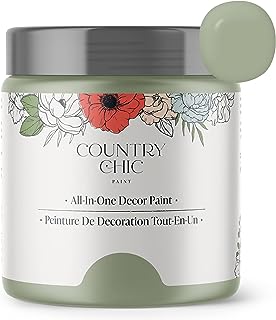
Country Chic Chalk Paint
Explore the eco-friendly and versatile qualities of Country Chic paints, an ideal choice for cribs. With its integrated primer and topcoat, this all-in-one DIY solution is perfect for wood, laminate, glass, metal, and more. Boasting over 80 years of expertise, Country Chic offers superior adhesion and lasting durability while requiring fewer coats. Achieve a charming chalky matte finish in just 30 minutes, allowing for distressing while ensuring safety for cribs.
Eco-Friendly & Safe: No harsh chemicals such as phthalates, formaldehyde, heavy metals, or solvents; ultra low VOC including pigments; low odor; certified safe as per European Toy Safety Standards.
Chalky Chicks
Chalky Chicks originated from the passion of two mothers deeply invested in furniture painting and interior design. Their product offers superior coverage, adept at painting various surfaces. Whether you fancy distressed or modern contemporary styles, their formula is tailored to meet your needs. With minimal prep work needed, it’s a breeze to use, perfect for both beginners and seasoned pros. Plus, it’s spray gun ready for added convenience. You’ll love its quick drying time, achieving a chalky matte finish in just 30 minutes. Not only is it easy to distress, but it’s also remarkably durable, leaving behind a silky-smooth finish that speaks of quality craftsmanship.
Eco-Friendly & Safe: Ultra-low VOC, hypoallergenic, very little odor.
Old Fashioned Milk Paint
Crafted in small batches, Milk Paint utilizes earth pigments—natural colorants derived from minerals or clay deposits—ensuring lasting vibrancy without fading. Its deep, rich colors faithfully mirror those found on vintage furniture and historic structures. The unique texture and hues of Milk Paint authentically capture the charm of Colonial or Shaker aesthetics, surpassing the capabilities of modern paints. Packaged as a dry powder, it grants users precise control over paint thickness, suitable for various applications such as washes, full cover coats, or stenciling.
Eco-Friendly & Safe: Non-toxic, zero VOCs when dry.
The Real Milk Paint Co.
Founded in 1995 by Dwayne Siever in a small Pennsylvania barn, The Real Milk Paint Company stemmed from his passion for restoring antique furniture. Now offering 56 unique colors, the family-owned company prioritizes natural ingredients and eco-friendly finishes. Their Stoneware Real Milk Paint boasts a light gray hue with hints of yellow and brown, ideal for achieving an antique look. Fast-drying and versatile, it requires no primer on raw wood or porous surfaces, making it a top choice for eco-conscious artisans.
Eco-Friendly & Safe: 100% organic, virtually odorless, and free from radioactive Kaolin Clays.
Retique It
Retique It Chalk Furniture Paint provides a versatile solution for furniture refurbishing, perfect for indoor and outdoor use. Its quick-drying, low-odor formula ensures convenience across projects. With a classic chalky finish, it adds rustic charm to any piece. Offering over 40 colors, it allows for personalized creations. Retique It caters to DIY enthusiasts with a range of restoration products, including chalk paint and liquid wood stain. Renowned for safety, quality, and user-friendliness, it’s a top choice for homeowners seeking to infuse creativity and character into their spaces.
Eco-Friendly & Safe: Water-based, low odor, ultra low VOC.
How Do You Choose the Right Non-Toxic Paint for Your Nursery?
When picking the perfect non-toxic paint for your baby’s crib, a few key factors will help you make the best choice for safety and style. Let’s break it down so you can feel confident in your decision and create a healthy, vibrant space for your little one.
Look for Reputable Safety Certifications
Safety certifications are your best friend here. Opt for paints with trusted certifications like GREENGUARD Gold or LEED. These labels mean the paint has passed tough testing to ensure it meets low chemical emission standards and won’t compromise your nursery’s air quality. Choosing paint with these certifications means you’re getting something that’s been independently verified as safe for your baby’s environment.
Check the Ingredients
It’s not just about what’s not in the paint, but what’s in it. Avoid paints with VOCs, formaldehyde, heavy metals, and other nasty chemicals. Instead, go for paints made with natural ingredients or low-impact synthetics. Zero-VOC and low-VOC options are your best bet for minimizing exposure to harmful substances.
Consider Durability and Practicality
Think about your nursery’s specific needs. If you expect lots of messes or moisture, you’ll want durable and easy-to-clean paint. Also, make sure the paint comes in the shades and finishes you’re dreaming of—because a safe nursery is a stylish one, too.
Check Compatibility with Surfaces
Is your crib wood, metal, or plastic? Make sure the paint you choose is compatible with the materials in your nursery. You may need a primer or sealer to ensure a smooth, long-lasting finish. A little prep goes a long way in keeping your nursery safe and looking fresh.
Preparing the Crib for Painting
A successful painting project starts with proper preparation. From cleaning and sanding the crib to ensuring a smooth surface to applying a suitable primer, this guide will walk you through the steps to prepare your crib for painting, ensuring optimal paint adhesion and finish.
Step 1: Cleaning – Thoroughly cleaning the crib to remove dirt, dust, or debris. Use a mild detergent and water solution to wipe down the surface, paying particular attention to crevices and corners where dirt may accumulate. Rinse the crib with clean water and allow it to dry completely before proceeding to the next step.
Step 2: Sanding – Once the crib is clean and dry, lightly sand the surface to create a smooth and even texture. Use fine-grit sandpaper to gently sand away any rough spots, imperfections, or previous finishes. Sanding promotes better paint adhesion and helps smooth out uneven areas for a professional-looking finish. Be sure to wipe away any sanding dust with a clean cloth before moving on to the next step.
Step 3: Priming – A suitable primer is essential for achieving good paint adhesion and ensuring long-lasting results. Choose a primer specifically formulated for baby furniture and follow the manufacturer’s instructions for application. Apply the primer evenly to the entire surface of the crib, using a brush or roller for larger areas and a small brush for corners and edges. Allow the primer to dry completely before proceeding to the final step.
Step 4: Surface Inspection – Once the primer is dry, inspect the crib’s surface for any remaining imperfections or areas needing additional sanding or touch-ups. Address any issues promptly to ensure a smooth and flawless finish.
Safety Tips for Using Non-Toxic Paint in Your Nursery
Even with non-toxic paint, ensuring a safe painting experience requires attention to essential safety measures. By following these safety tips, you can safeguard yourself and your family during the painting process:
Proper Ventilation
Adequate ventilation is crucial when painting indoors. Open windows and doors to allow fresh air to circulate and help dissipate paint fumes. Consider using fans to enhance air circulation, especially in enclosed spaces like nurseries. If possible, set up a ventilation system or use exhaust fans to remove paint fumes directly outside.
Use Protective Gear
While non-toxic paint is safer than conventional paints, protecting yourself during the painting process is still essential. Wear gloves to protect your skin from irritation and use safety goggles to shield your eyes from splatters or airborne particles. Additionally, consider wearing a mask or respirator to prevent inhalation of paint fumes and airborne contaminants.
Keep Children and Pets Away
To minimize exposure to paint fumes and wet paint, keep children and pets out of the painting area during the process. Choose a time when children and pets can be safely supervised in another room or outside while you work. Once the paint has dried and the area is adequately ventilated, it’s safe for them to return.
Follow Manufacturer’s Instructions
Always read and follow the manufacturer’s instructions and safety guidelines on the paint label. This includes information on proper application techniques, recommended drying times, and any additional safety precautions specific to the product. Adhering to these instructions ensures the best results and minimizes potential risks.
Dispose of Paint Properly
After completing your painting project, properly dispose of any leftover paint and empty paint cans. Check local regulations for guidance on paint disposal, as some areas may have specific guidelines for handling and recycling paint products. Avoid pouring paint down the drain or disposing ofit in household trash, as this can harm the environment.
Clean Up Thoroughly
Once you’ve finished painting, clean up any spills or splatters promptly to prevent slips and falls. Dispose of used paintbrushes, rollers, and other painting tools properly, following manufacturer recommendations for cleaning and storage. Wipe down surfaces with a damp cloth to remove residual paint or dust.
Maintaining Your Painted Crib
Keeping your painted crib looking fresh and safe for your little one doesn’t have to be a chore. Here are some simple tips to maintain that vibrant, non-toxic finish for the long haul:
Regular Cleaning
Wipe down the crib with a soft, damp cloth to keep dirt and dust at bay. Skip harsh chemicals and abrasives, which can harm the paint. Use a mild soap solution for stubborn spotsand always test it in an inconspicuous spot first.
Avoid Abrasions
Be mindful of sharp toys or rough edges that could scratch the paint. A little cushion under toys can help protect the crib’s surface from unwanted damage.
Touching Up Paint
Little nicks and scratches happen—just keep a small container of matching paint on hand for quick touch-ups. Clean the area first, then apply the paint carefully with a small brush to blend it in.
Preserve the Finish
Consider a protective sealant to guard against moisture and scratches to keep your crib looking sharp. For the best results, follow the manufacturer’s instructions.
Inspect for Wear
Give your crib a regular once-over to spot any peeling or fading paint. Catching small issues early will keep it looking new and safe for your baby.
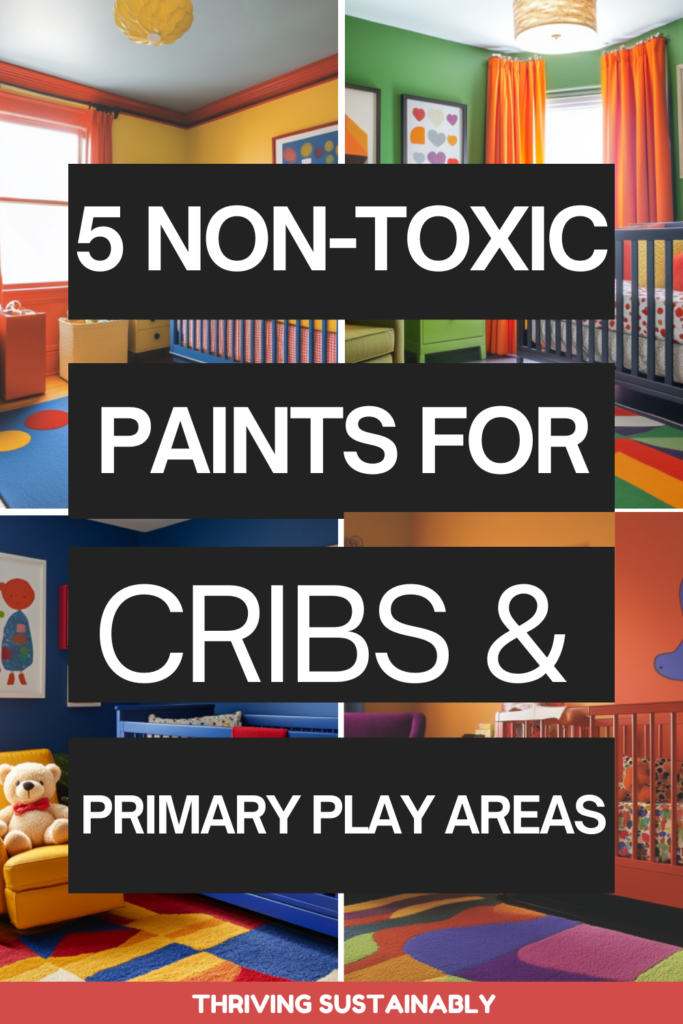
This post was about non toxic paint for crib.
